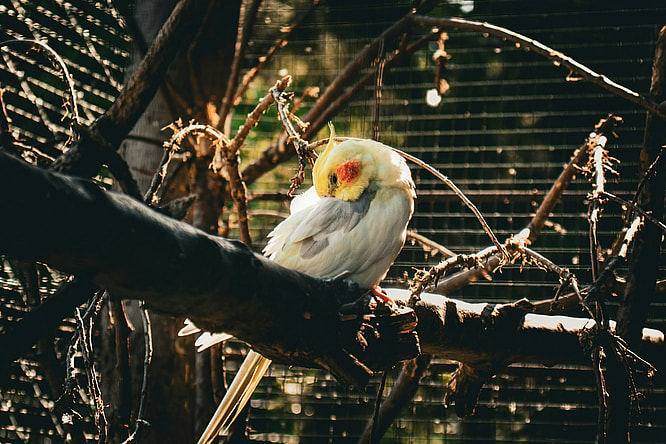
Birds are known for their beautiful calls and melodies, which reverberate throughout fields and forests. Nonetheless, some species provide a peaceful substitute for individuals looking for bird friendship without the disturbance. Knowing the quietest birds will help you make better decisions, whether you’re an experienced bird watcher or thinking about getting your first feathered buddy.
Although no pet bird is vocally completely silent, certain species are noticeably less loud than others. Eight of the quietest pet birds are included in this post; they are all unique in their own right and may all blend in nicely with your home’s decor. Small finches to soft doves, these feathered friends offer a variety of dispositions and maintenance needs, so there’s a peaceful bird to fit any kind of lifestyle. Also, check out the largest animal, the strongest animal, rare purple animals, and more!
Also Read: What Is the Loudest Animal in the World?
8. Finch
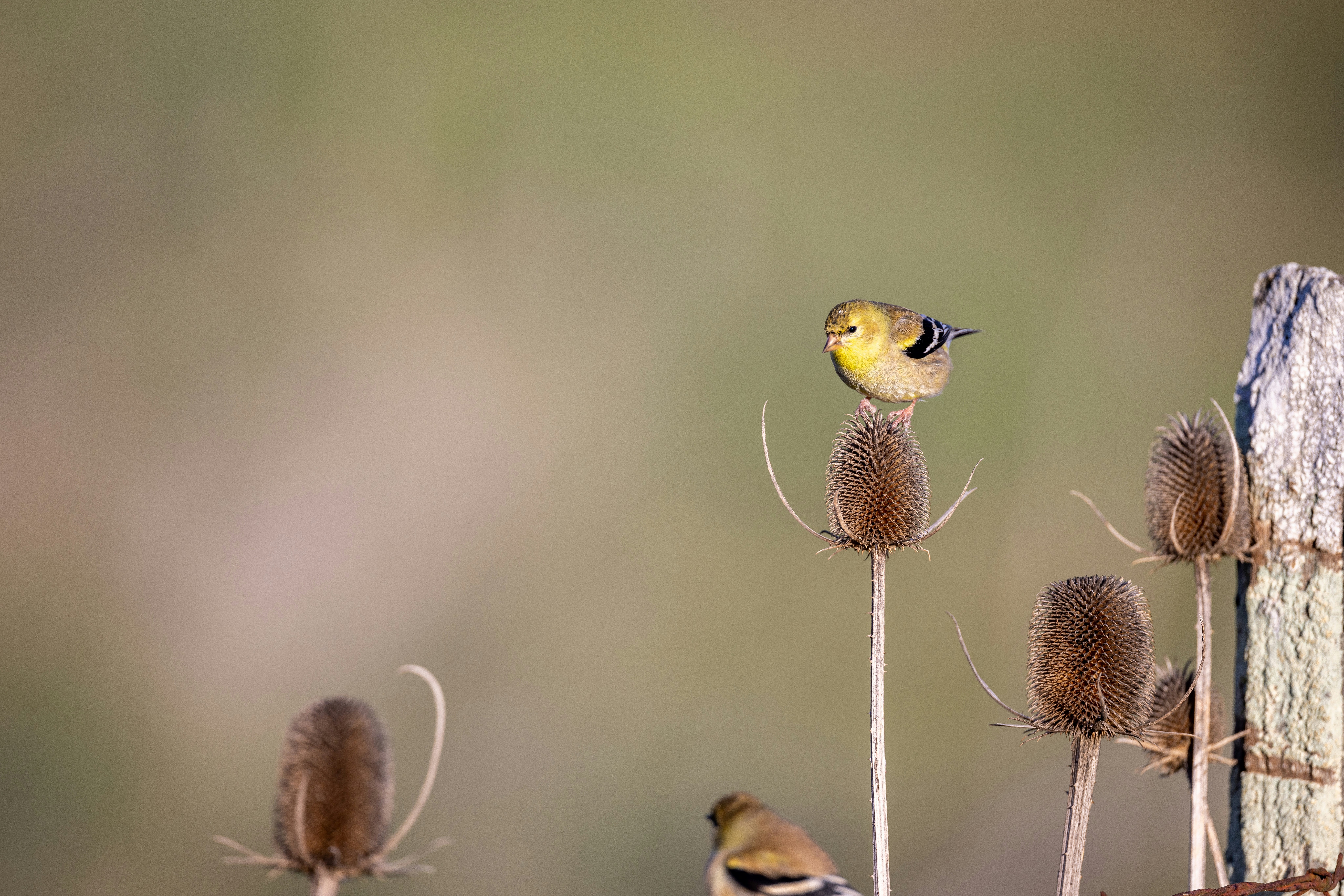
As members of the Fringillidae family, finches are distinguished by their small stature and delicate characteristics as some of the quietest birds. They usually weigh approximately 0.5 ounces and are about 4 inches long. Male finches are easily recognized by their black and white throat bars, orange cheek patches, and reddish-orange beaks; female finches, on the other hand, are often gray-colored and have duller beaks.
These gregarious birds are great in large aviaries kept in groups because they enjoy the companionship of their flock members. They are comparatively indifferent birds that would rather interact with one another than with human caregivers. Since finches are gregarious birds, they need lots of space to fly around and investigate their surroundings.
As members of the Fringillidae family, finches are distinguished by their small stature and delicate characteristics. They usually weigh approximately 0.5 ounces and are about 4 inches long. Male finches are easily recognized by their black and white throat bars, orange cheek patches, and reddish-orange beaks; female finches, on the other hand, are often gray-colored and have duller beaks.
These gregarious birds are great in large aviaries kept in groups because they enjoy the companionship of their flock members while still being some of the quietest birds. They are comparatively indifferent birds that would rather interact with one another than with human caregivers. Since finches are gregarious birds, they need lots of space to fly around and investigate their surroundings.
7. Canary
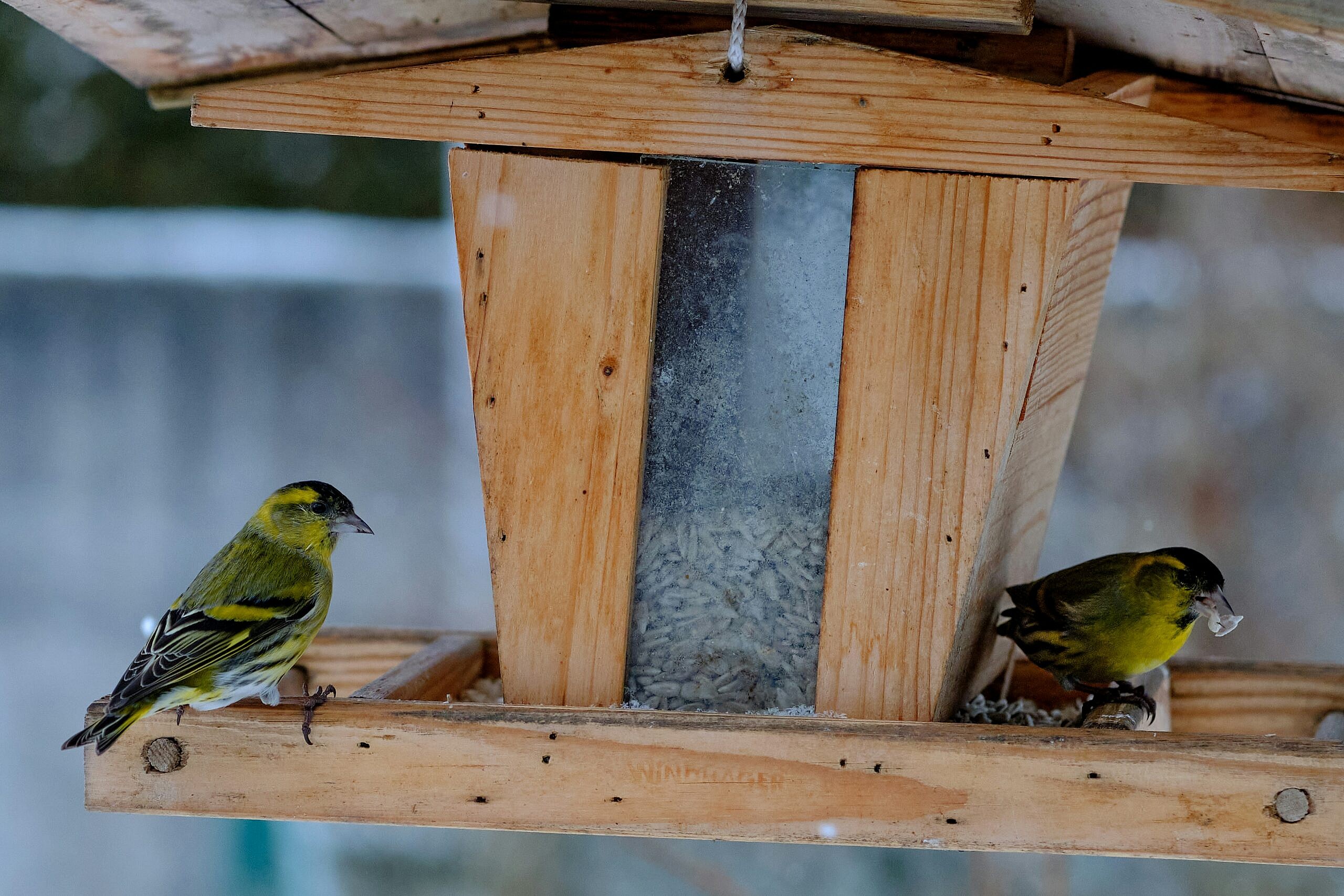
Canaries are adored for their colorful plumage and melodic vocals. They belong to the finch family (Fringillidae). They usually weigh between 0.5 and 1 ounce and are 5 to 8 inches long and are some of the quietest birds. The most frequent hue of canaries is bright yellow, although they can also be red, orange, white, or pink. Some kinds even have ruffled feathers or head crests for aesthetic appeal.
Canaries, although gentle, are relatively solitary birds who prefer private homes, unlike finches. Because of their diminutive size, they are known for having beautiful, softer voices when they sing. Canaries need a roomy flight cage so they can walk around and practice their wings. They prefer to remain politely apart from human caregivers and do not especially enjoy being handled despite being some of the quietest birds.
High-quality canary seed mix is the main source of nutrition for canaries, with occasional fruits and fresh greens and vegetables added for balance. They will obtain the vital vitamins and nutrients required for their general health and wellbeing if they eat a varied diet.
Canaries need routine veterinary examinations in order to identify and avoid frequent health problems including mites and respiratory infections. Because canaries are sensitive to environmental changes, it is essential to keep the temperature and humidity in their enclosure consistent for their well-being.
Read More: How Smart is an Elephant? Here’s the Fascinating Science Behind These Animals
6. Budgerigar (Budgie)
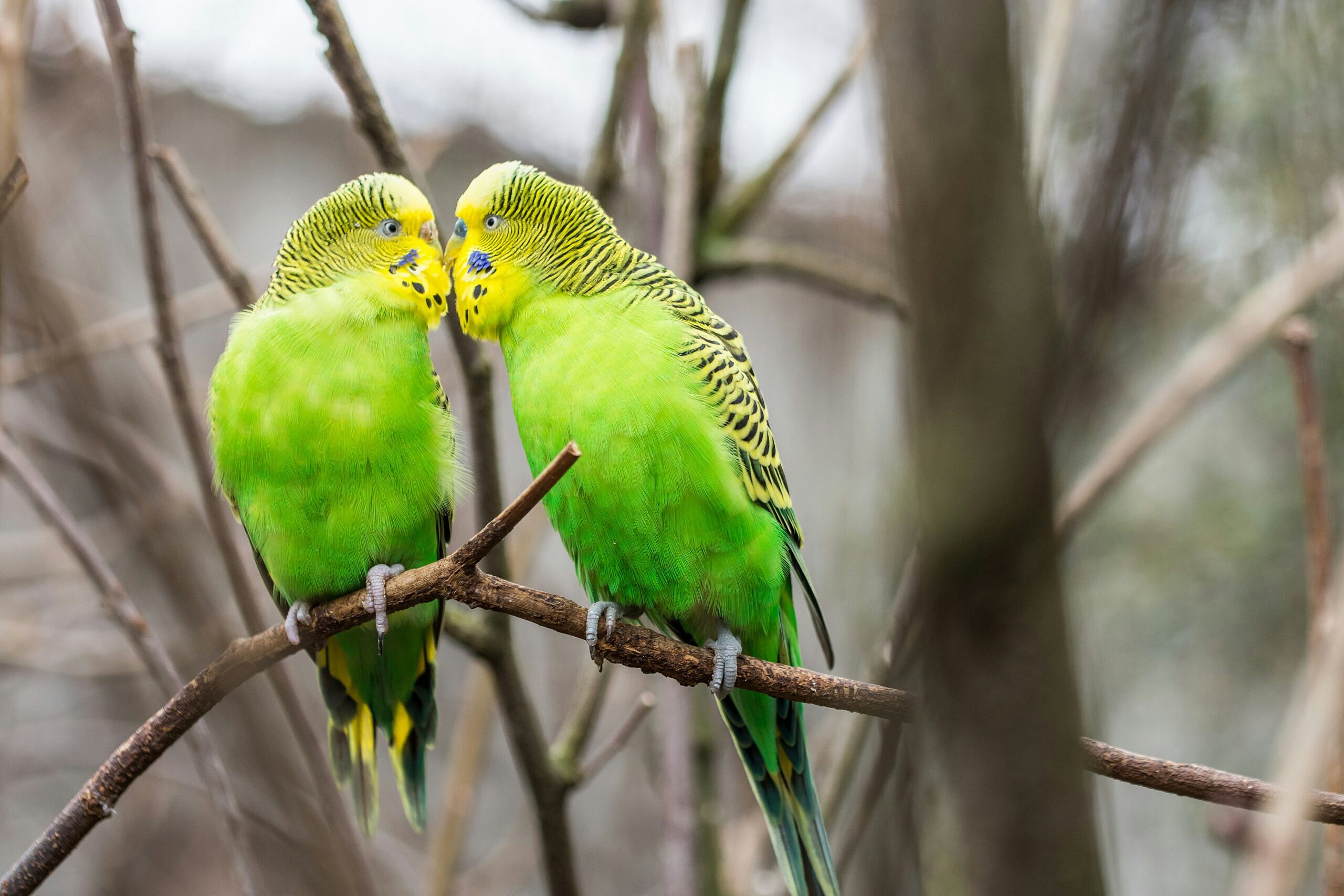
The genus Melopsittacus includes budgerigars, also referred to as budgies, which are little parrots. They are normally about 1 ounce in weight and 6 to 8 inches long. Bright green abdomens, black and yellow backs, yellow heads, and dark blue tails are characteristics of budgies. They also come in a variety of mutations, giving you the option to choose from a wide range of colors, such as blue, yellow, white, and gray.
The gregarious and extremely clever budgie is well-known for its ability to mimic sounds and conversation despite being some of the quietest birds. They need a range of toys and activities to keep them occupied since they prefer interactive play and mental stimulation. Budgies are playful birds, but their talkative, gentle vocalization is less annoying than that of larger parrots.
They benefit from frequent handling to keep their amiable disposition, and they thrive on everyday interaction with their human caregivers.
A well-rounded meal for budgies consists of premium budgie seed mix enhanced with fresh fruits and vegetables, as well as sporadic millet sprays or live insects as some of the quietest birds. For them to be healthy generally, with strong feathers and a healthy immune system, they must eat a balanced diet.
If budgies are not given a healthy diet and a clean living space, they may develop health problems such as psittacosis, respiratory infections, and fatty liver disease. Keeping an eye on their appearance and behavior enables early detection of any sickness symptoms, guaranteeing timely veterinarian care.
5. Parrotlet
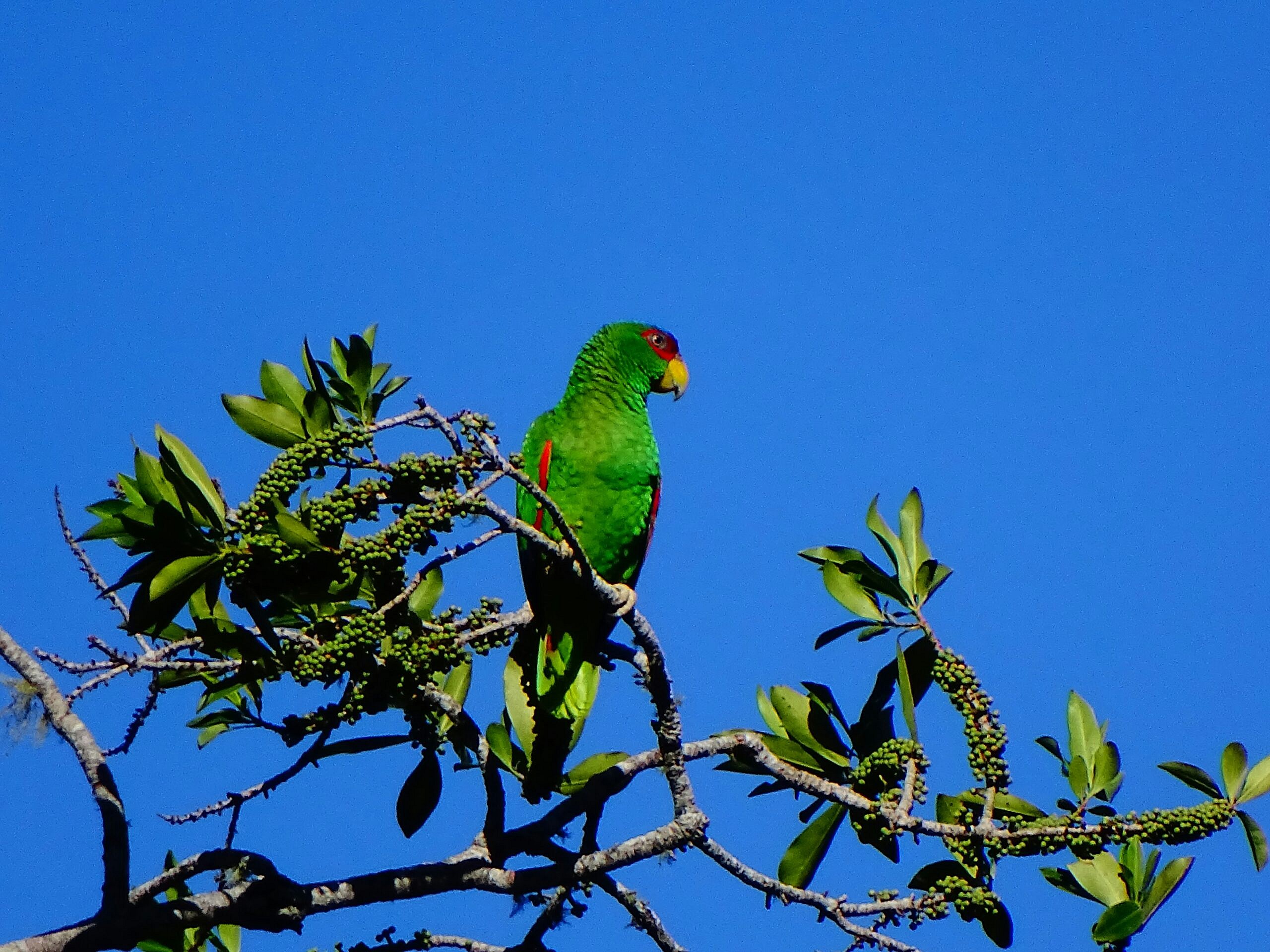
Parrotlets, sometimes known as miniature parrots, are members of the Forpus genus and are distinguished by their small stature and gregarious nature as some of the quietest birds. They weigh approximately one ounce and are typically 4 to 5 inches long. Parrotlets are green-colored birds with blue highlights on their backs and behind their eyes; however, they can also be blue, yellow, or white due to genetic abnormalities.
Parrotlets are lively, inquisitive birds who need regular engagement and mental stimulation despite their small size. They are gregarious animals that form strong bonds with their human caregivers and take pleasure in interactive play and handling. Because of their delicate, gentle vocalization, which consists of infrequent whistles and light chirps, parrotlets are a great choice for homes where noise levels are an issue as they are some of the quietest birds.
High-quality parrotlet seed mix, together with occasional treats like millet sprays or little portions of cooked grains and legumes, are essential components of a well-balanced diet for parrotlets. An active lifestyle is supported and optimal health is ensured by proper eating.
Parrotlets require routine veterinarian examinations in order to track their general health and identify any early warning indicators of sickness. Common health problems that can be avoided with a healthy diet, regular exercise, and environmental enrichment include obesity, respiratory infections, and feather plucking.
Also Read: What is the Most Dangerous Animal in the World?
4. Cockatiel

Members of the cockatoo family (Cacatuidae), cockatiels are adored for their lovable dispositions and characteristic head crest as some of the quietest birds. They are usually about 3 ounces in weight and 12 to 13 inches long. Gray bodies with yellow faces and crests, orange cheeks, and long tails are characteristic of cockatiels. Additionally, they come in a variety of mutations that offer a range of color variants, such as pied, cinnamon, lutino, albino, and pied.
Compared to larger parrots, cockatiels are renowned for their calm disposition and few vocal interruptions. They frequently spend their days making ear-pleasing vocalizations, such as whistling and imitating home noises as some of the quietest birds. Cockatiels benefit from frequent handling and engaging play sessions and thrive on social interaction with their human caregivers.
High-quality cockatiel seed mix, along with occasional treats like millet sprays or tiny amounts of cooked grains and legumes, make up a healthy diet for cockatiels. Strong feathers and a robust immune system are guaranteed by proper nourishment, which also supports their active lifestyle.
If given an inadequate diet and unclean living conditions, cockatiels are prone to health problems such psittacosis, respiratory infections, and fatty liver disease. Keeping an eye on their appearance and behavior enables early detection of any sickness symptoms, guaranteeing timely veterinarian care.
3. Senegal Parrot
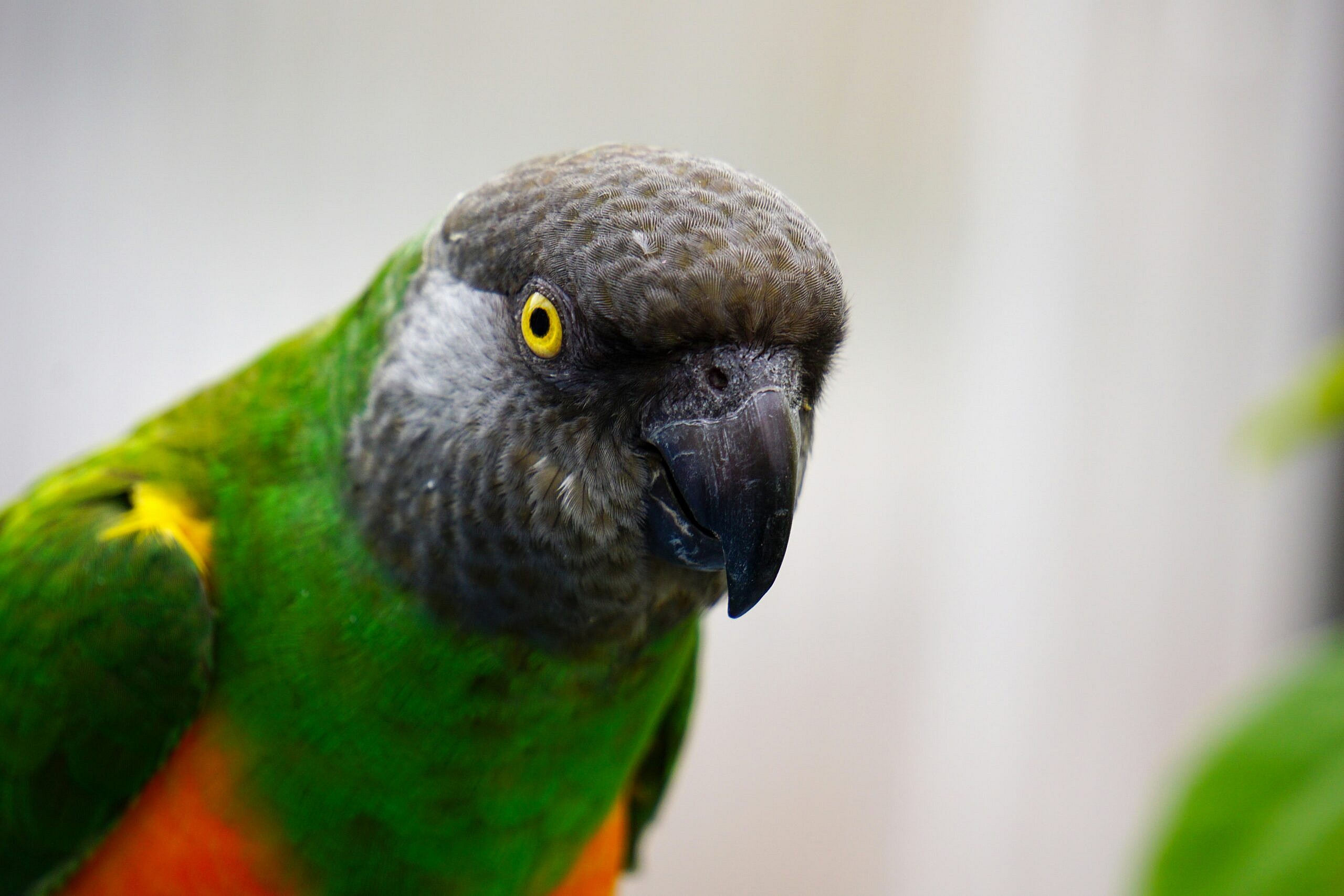
Senegal parrots are members of the Poicephalus genus and are native to areas of West Africa. They are distinguished by their small size and peaceful disposition. They usually weigh between 4 and 5 ounces and are about 10 inches long. Senegal parrots have green wings and chests, gray heads, and a characteristic reddish-yellow V-shaped patch on their bellies.
Senegal parrots have a more restrained vocal repertoire than many other parrot species that are well-known for their raucous vocalizations despite being some of the quietest birds. Though they are less prone to screech than larger parrots, they do like soft vocalizations and can be trained to mimic speech and sounds. Senegal parrots love to spend time sitting with their human caregivers for company, since they thrive on social interaction though they are some of the quietest birds.
Senegal parrots should eat a diet rich in fresh vegetables, fruits, and occasionally treats like millet sprays or tiny portions of cooked grains and legumes in addition to a high-quality parrot seed mix. Providing them with a healthy diet promotes their active lifestyle and guarantees optimum health.
Senegal parrots require routine veterinarian examinations in order to track their general health and identify any early warning indicators of sickness. Common health problems that can be avoided with a healthy diet, regular exercise, and environmental enrichment include obesity, respiratory infections, and feather plucking.
Read More: What Is the Rarest Animal in the World?
2. Bourke’s Parakeet

Australia’s native Bourke’s parakeets are prized for their calm and kind nature, which makes them the perfect companion for anyone looking for a serene bird presence and some of the quietest birds. They are usually about 2 ounces in weight and 7 to 9 inches long. The plumage of Bourke’s parakeets is tawny, including pink abdomens, blue rumps, and yellowish-brown beaks. To differentiate between the sexes, males have blue crowns and females have white crowns.
The rather active Bourke’s parakeet is renowned for its soft voice and calm demeanor. Despite not being as active as some other parrot species, they like to spend time in a large area where they can fly and explore. Bourke’s parakeets find pleasure in perching and watching their environment, and they get social connection with their human caregivers as some of the quietest birds.
High-quality parakeet seed mix, along with occasional treats like millet sprays or tiny amounts of cooked grains and legumes, make up a balanced diet for Bourke’s parakeets. Ensuring adequate nourishment not only promotes robust feathers and a healthy immune system, but it also improves overall health.
Bourke’s parakeets require routine veterinary examinations in order to track their general health and identify any early warning indicators of sickness. Respiratory infections, mites, and vitamin shortages are common health problems that can be avoided with a healthy diet, enriching surroundings, and prompt medical attention.
1. Dove – Quietest Birds
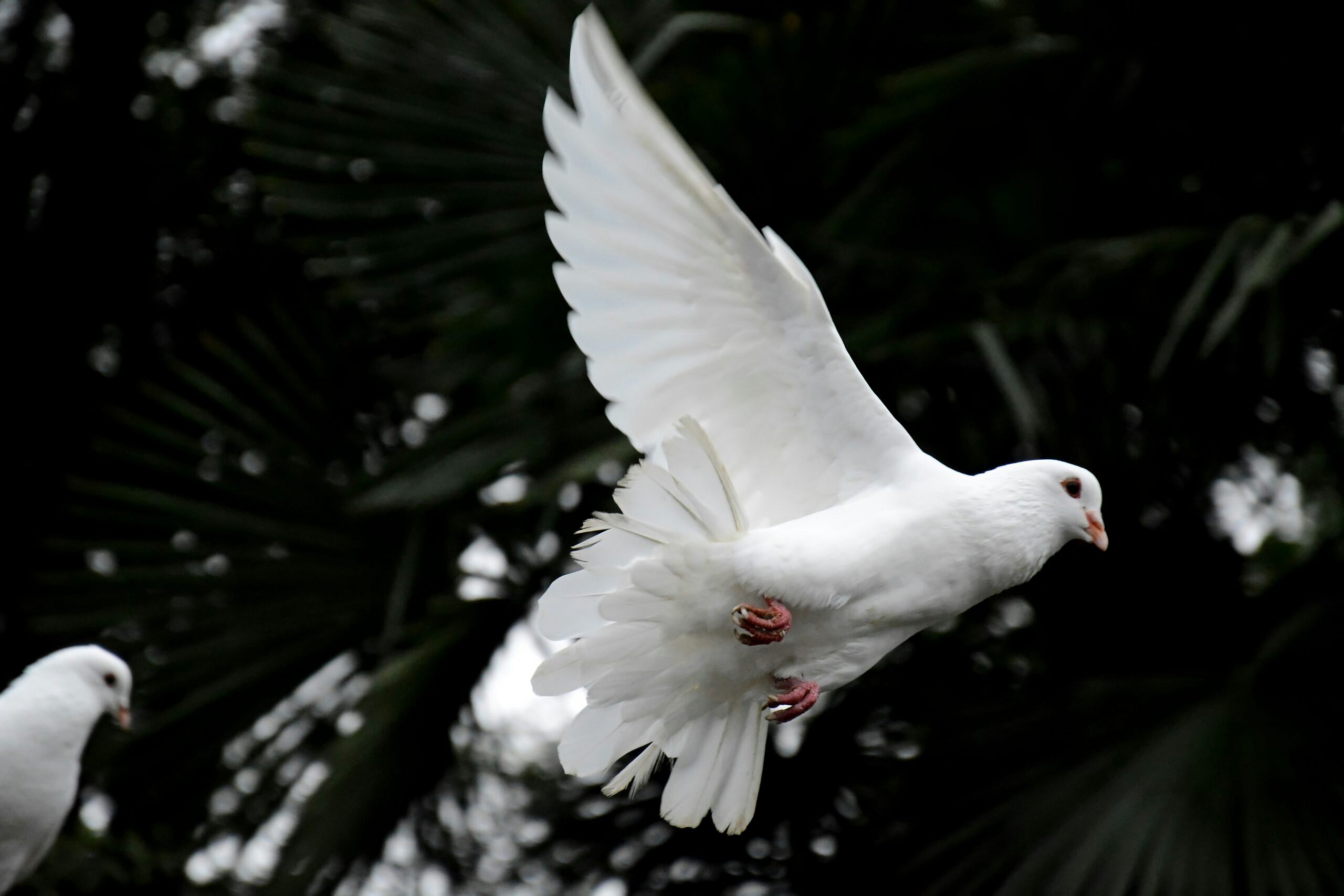
Doves are members of the Columbidae family and are renowned for their kind nature and lovely cooing vocalizations as one of the quietest birds. They usually weigh between five and eight ounces and are between eleven and thirteen inches long. Doves have drab brown and gray plumage, and they frequently have a black collar at the nape of their necks. Their appearance can be made more diverse by mutations, which can result in varieties like pied (ring-necked dove), orange, and white.
Doves are gentle birds with calming cooing vocalizations that fill any room with a calm atmosphere as they are the quietest birds. Considering how quiet they are in comparison to many other parrot species, they are a good choice for homes where noise pollution is an issue as some of the quietest birds. Doves gain from gentle touch and connection and love spending time with their human caregivers.
High-quality dove seed mix, along with occasional treats like millet sprays or tiny amounts of cooked grains and legumes, make up a well-balanced diet for doves. Ensuring adequate nourishment not only promotes robust feathers and a healthy immune system, but it also improves overall health.
Doves require routine veterinarian examinations in order to track their general health and identify any early warning indicators of disease. Respiratory infections, plucking of feathers, and parasites are common health problems that can be avoided with good nutrition, enrichment of the habitat, and careful attention.
Every bird on this list has a special combination of qualities that add to its peaceful disposition and appropriateness as pets as some of the quietest birds. These birds offer several alternatives for creating a peaceful relationship in your house, depending on your preferences: gentle companionship, participatory play, or quiet vocalizations. Come along as we discuss the unique characteristics and maintenance needs of each species to assist you in selecting your feathered friend.


